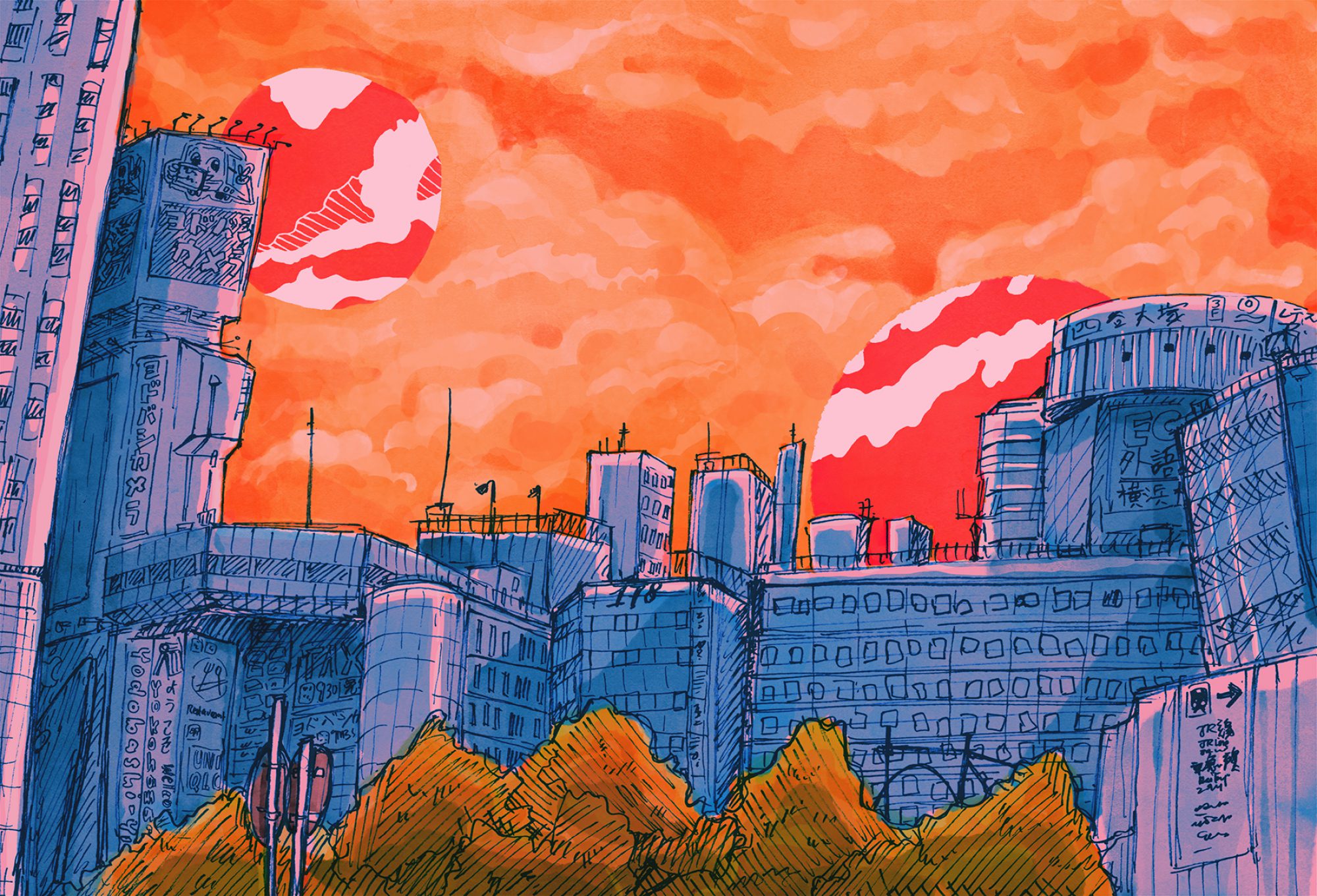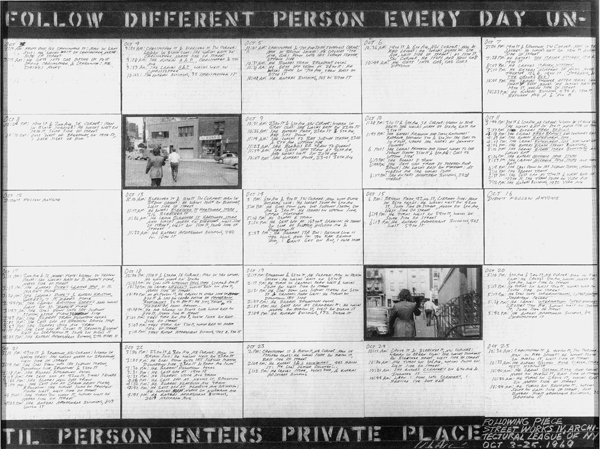Hey my dudes!!! This is a research post for our final 4D project for this semester, which will be an installation that is centered around time and its different forms. Sounds tough. Will also probably be damn tough. 🙁 And I’m so clueless hohoho!! Better take this research seriously whoop.
DEFINITIONS OF TIME-BASED ART & MEDIA
Time-based art is a cluster of units dealing with the complex multiplicity of artistic forms, which use the passage of and the manipulation of time as the essential element.
Time-based media on the other hand, is more of a limited spectrum. Contemporary timed-based media include video, film, slide, audio, or computer technologies, because they have duration as a dimension and unfold to the viewer over time.
TYPES OF TIME IN TIME-BASED ART & MEDIA
| Measured time | Time quantitatively measured by regularly recurring events or intervals.
1. Linear time: Where there is a beginning and an end/a past, present and future. Time is always moving forward. 2. Circular time: A repeating process that create continuous and infinite outcomes. |
| Experienced time | This is the perception of time passing that can be influenced by the viewer’s psychological disposition and attention. |
|
Edited time |
Time that has been cut up and rearranged.
1. Linear time: Events in order of past, present and future. 2. Non-linear time: No required order of events. |
| Biological time |
Biological time is a measure of time related to bodily functions, such as when we feel awake, tired, or hungry. |
TIME-BASED ARTWORK AND MEDIA
1. Vito Acconci, Following Piece, 1969
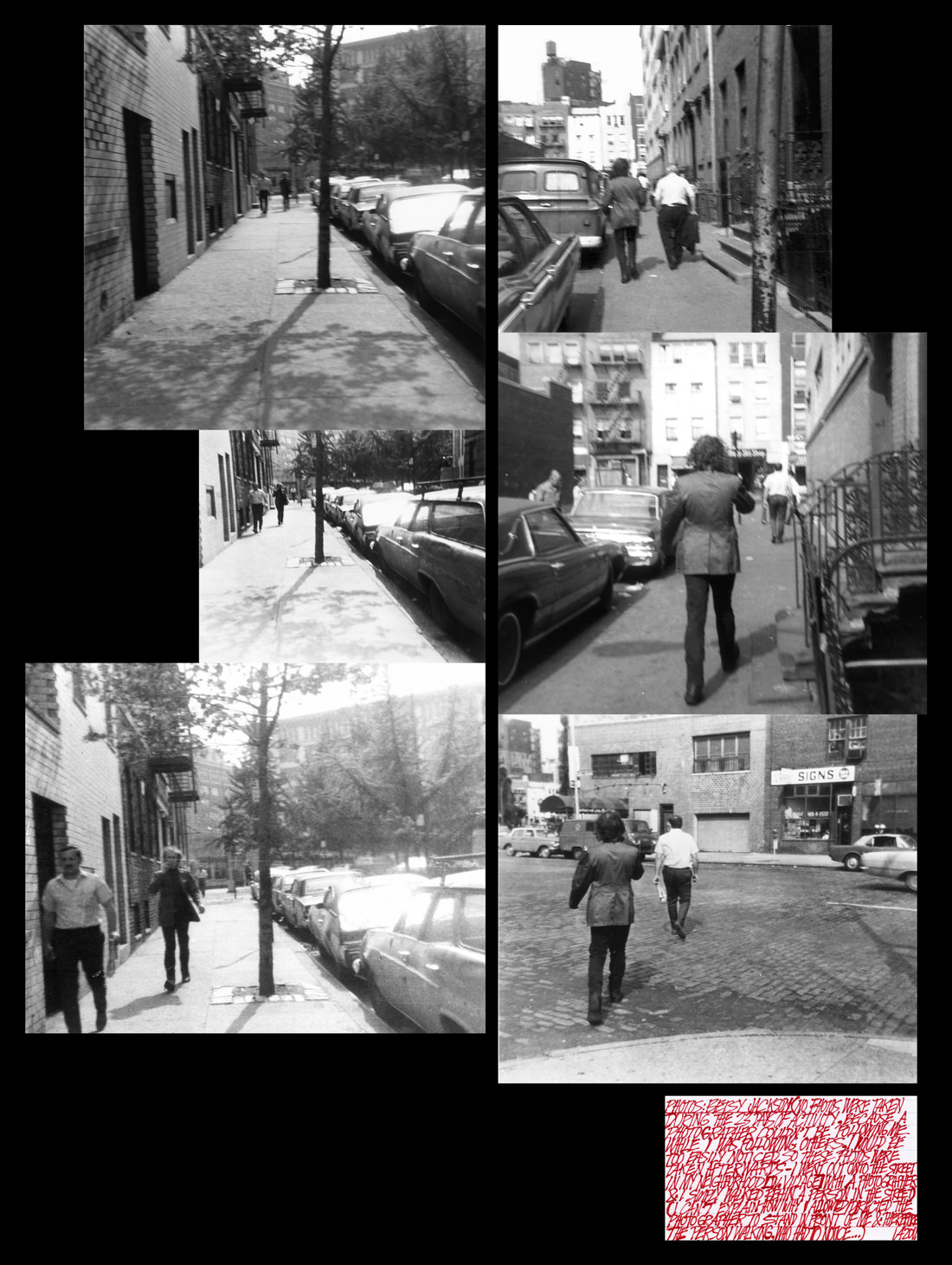
| Subject | Acconci himself, and random passerbys on the streets of NYC. |
| Form | The nature of the artwork where he traces the steps of strangers, everyday, in real life is a form of measured time. |
| Context | Took place everyday on the streets of New York, between October 3rd and 25th, 1969. It was part of other performance and conceptual events sponsored by the Architectural League of New York that occurred during those three week, and the terms of the exhibition “Street Works IV” was to use a street in New York City. |
| Content | Following Piece was concerned with the language of our bodies, not so much in a private manner, but in a unusually public manner. By selecting a passer-by at random until they entered a private space, Acconci submitted his own movements to the movements of others, showing how our bodies are themselves always subject to external forces that we may or may not be able to control. Acconci himself wrote that the piece was meant to make use of the time and space in New York City. The time intervals varied widely, from a few minutes to a few hours when the strangers went to restaurants or theatres. |
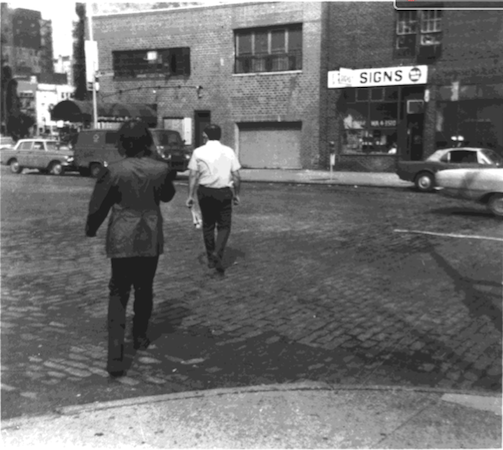
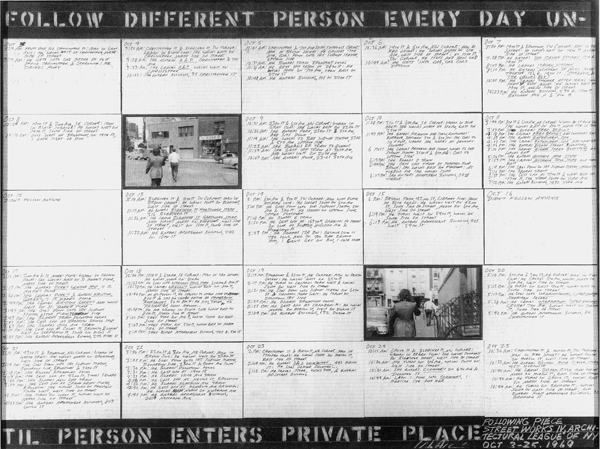
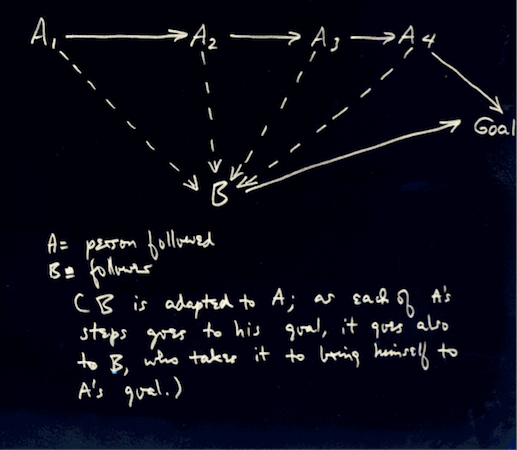
2. Tacita Dean, The Green Ray, 2001
(The Green Ray is from the beginning to 2:33)

| Subject | The sun setting over the horizon of a channel. |
| Form | This is also an example of measured time due to the sun setting in real time. |
| Context | While the film is actually silent, Dean explains that the film was taken due to her exploration in attempting to capture the phenomenon of the ‘green ray’. In her words, “When the sun sets, in a very clear horizon, with no land mass for many hundreds of miles, and no moisture or atmospheric pressure, you have a good chance of seeing it. The slowest ray is the blue ray, which comes across as green when the sun sets in perfect atmospheric conditions. It’s the last ray as the sun recedes with the curvature of the earth. Like a pulse on the horizon. It’s totally fractional, though it can last longer.” It was filmed in Madagascar. |
| Content | Her preoccupation with using optical and analogue film allowed her to seemingly capture the green ray as opposed to normal digital cameras, as a couple had been filming next to her at the same time and had been unable to see the green ray. Not everyone is able to see the green ray in the film, which is an aspect of the piece that communicates how seeing something may be dependent on faith and belief alone, although Dean is certain that the ray is not an illusion. The piece is also about her efforts and commitment to push for continuing the dying use of film in artwork. |
3. Christian Marclay, Video Quartet, 2002
Here’s a 1 minute excerpt of the film which is 14 minutes in total.
| Subject | 4 large scale videos that create a virtuoso visual and sonic collage. |
| Form | This is edited time due to the cutting up and reordering of different clips, and it is non-linear because the film loops over and over. |
| Context | Marclay used his prior knowledge as a turntablist to establish that it was essentially the same principle of rearranging snippets of sound to create a unified composition. Marclay’s work has always been closely tied to the themes of sound and image, such as his older work, Telephones (1995) and his later work, The Clock (2010). |
| Content | The film is made from clips from over 700 Hollywood movies that depict musical instruments being played, rhythmic sounds like doors slamming or roulette wheels spinning, and even human sounds like gasping or screaming. They are then subsequently rearranged into four different channels and played simultaneously with one another, forming a cinematic orchestra of sound and visuals. Moreover, it is not just a constant stream of sound, but has dramatic or melancholic moments as well, enhancing its symphony-like nature. One of the themes behind the work is the idea that ‘what you see is what you hear’; visual and audio is inextricably intertwined, and the visual can influenced the way audio is interpreted. Furthermore, the piece is also a form of homage to the rich culture of cinema in Hollywood from the 1920s to the 2000s. |
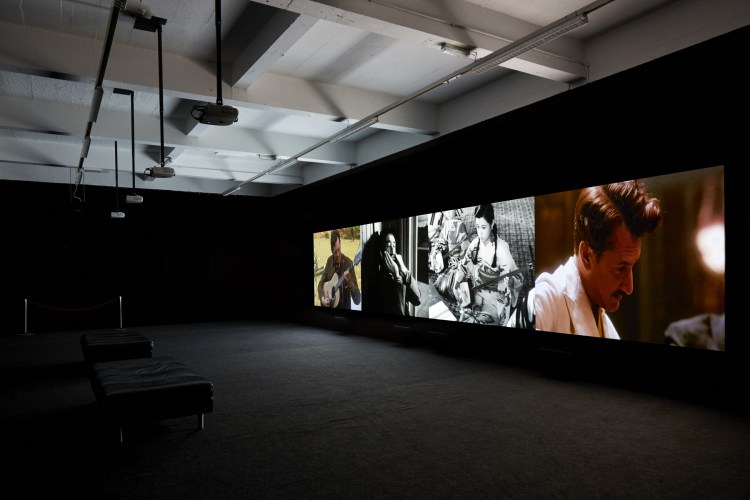
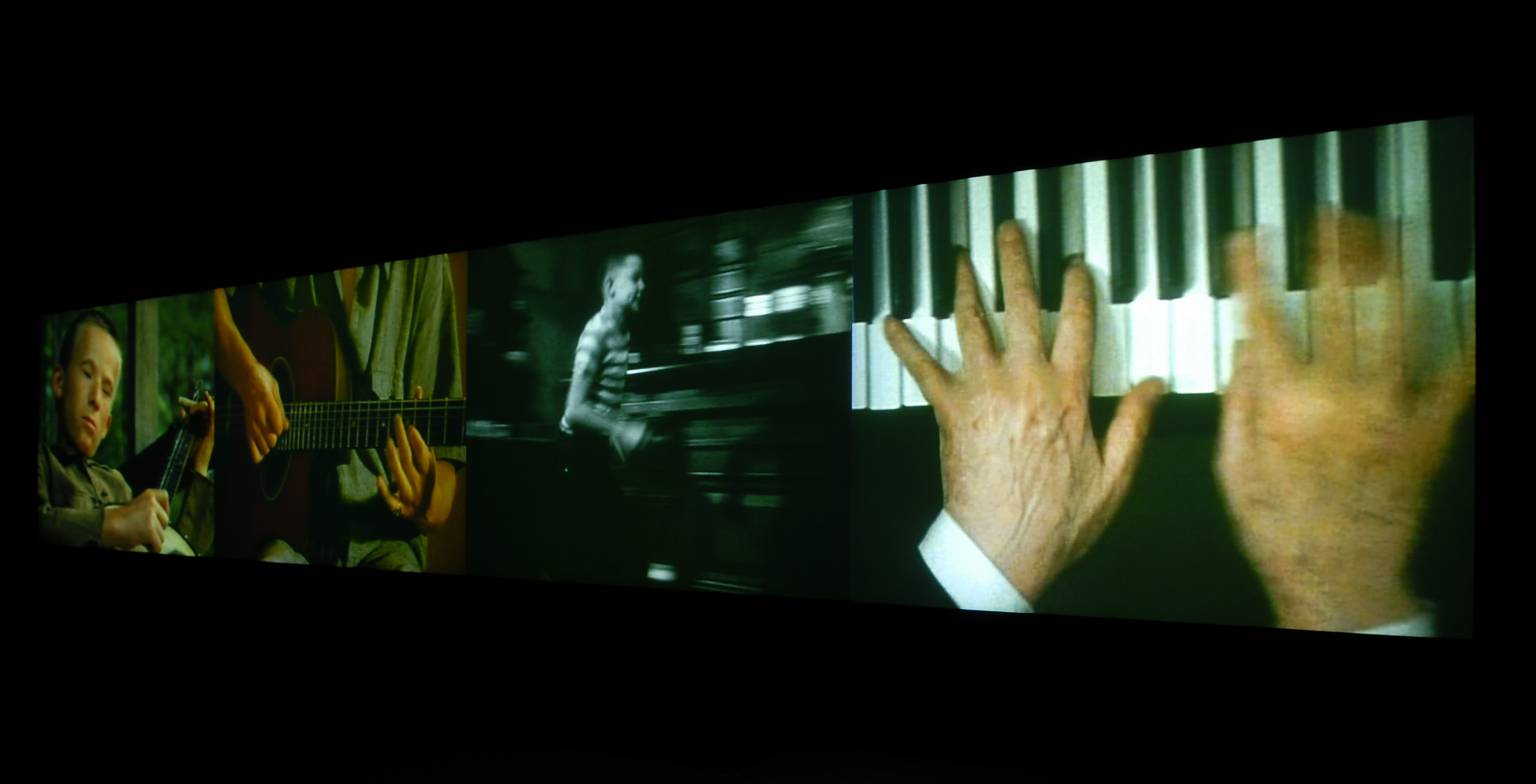
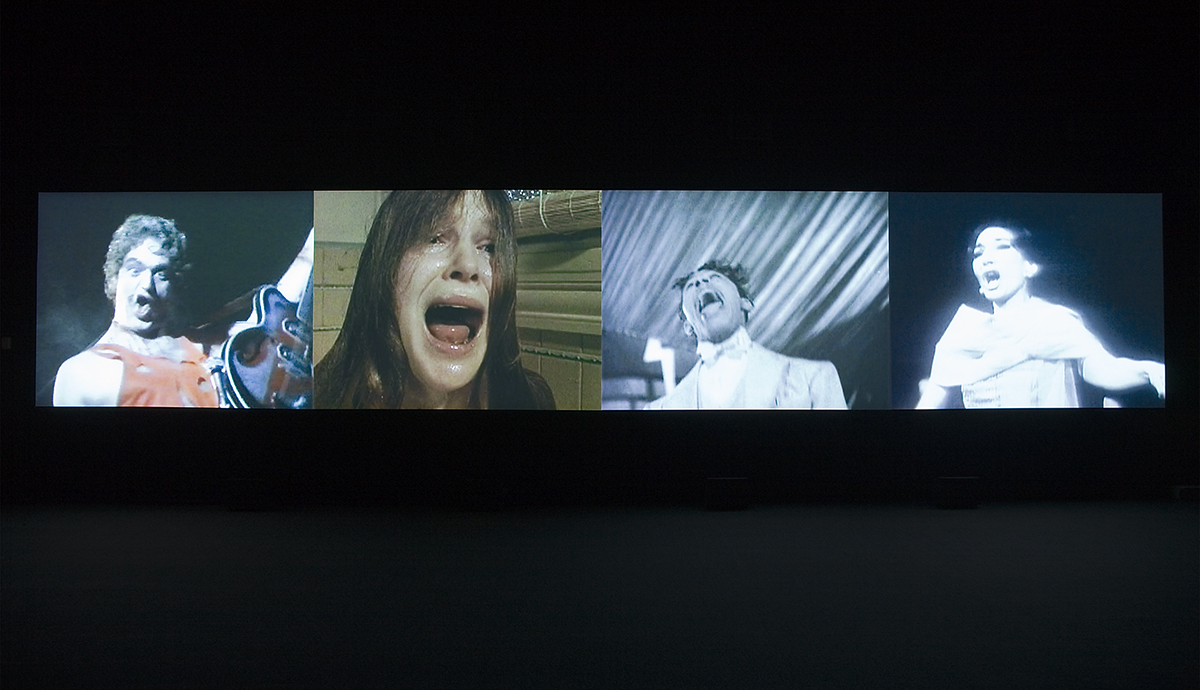
COMPARISONS BETWEEN THE ARTWORKS
| Acconci’s Following Piece | Marclay’s Video Quartet | |
| Similarities | – Both make use of large space to create a sense of being surrounded. Following Piece takes advantage of the entirety of the streets of New York to create a sense of helplessness in its vastness, as beings that are able to be manipulated by external forces. On the other hand, Video Quartet is displayed on extremely large screens to immerse the viewer in the cinematic realm of sound and image.
– Both contain the theme of connection to other unrelated pieces. Following Piece connects Acconci to strangers on the street, whereas Video Quartet splices together pieces of unrelated films, and both create a complete work from these initially unconnected elements. |
|
|
Differences |
– Following Piece is much longer than Video Quartet, as it is a form of measured time rather than edited time. On the other hand, Video Quartet takes us over the span of several decades of cinematic history, whereas Following Piece spans 3 weeks. | |
OTHER WORKS
These are some other works that I found that I thought were really interesting but didn’t think that they fit the idea of time as clearly as the other works did.
A. Vito Acconci, Seedbed, 1972
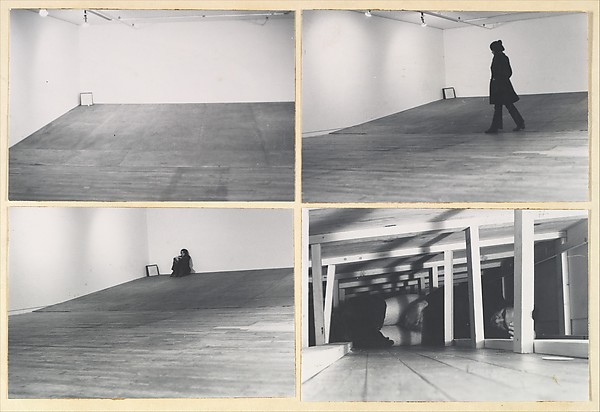
From The Met: In January 1972, Acconci staged one of the decade’s most notorious performance art pieces at the Sonnabend Gallery in SoHo. Gallery visitors entered to find the space empty except for a low wood ramp. Hidden below the ramp, out of sight, Acconci masturbated, basing his fantasies on the movements of the visitors above him. He narrated these fantasies aloud, his voice projected through speakers into the gallery: “you’re on my left . . . you’re moving away but I’m pushing my body against you, into the corner . . . you’re bending your head down, over me . . . I’m pressing my eyes into your hair.” Seedbed was a seminal work that transformed the physical space of the gallery through minimal intervention to create an intimate connection between artist and audience, even as they remained invisible to one another.
B. Tacita Dean, A Bag Of Air, 1995.
From The Tate: A Bag of Air is a short film three minute film that functions like a poetic vignette. Filmed in black and white, it opens with the shadow of a hot air balloon and two passengers ascending over an agricultural landscape to the sound of the balloon’s gas burner and ambient birdsong. As the balloon rises, the artist’s voice-over begins narrating instructions for collecting a bag of air ‘so intoxicated with the essence of spring that when it is distilled and prepared, it will produce an oil of gold, remedy enough to heal all ailments’ (quoted in Tacita Dean 2006, p.121). The camera then rests on a pair of hands, emerging from the sleeves of a white lab coat, that manipulate a clear plastic bag, alternately holding it wide open to fill it with air, and tying a knot to seal it. The final shot shows the filled and knotted bag held up to the sky, providing a vivid contrast with the opening view of the balloon’s shadow on the ground. This provides a visual metaphor for the alchemical distillation described in the artist’s words: ‘a delicacy of substance that is both celestial and terrestrial’.
C. Peter Campus, Three Transitions, 1973
From the MoMA: In Three Transitions, Campus presents three introspective self-portraits that incorporate his dry humour. He begins with an image created by two cameras facing opposite sides of a paper wall and filming simultaneously. His back to one camera, Campus cuts through the paper. In the double image, it appears as if he is cutting through his back, which is both disconcerting and tongue-in-cheek. Campus then uses the “chroma–key effect” of superimposing one video image onto a similarly coloured area of another image. He applies blue paint to his face, and during this process another image of himself is revealed; he then superimposes his image on a piece of blue paper, which he sets afire. As Three Transitions moves between deadpan humour and seeming self-destruction, Campus explores the limits of visual perception as a measure of reality.
D. Christopher Nolan’s films

I just wanted to bring this up since the theme of time and the manipulation of it is so present in his films, for example Memento (2000), where the entire plot of the story is told in five minute intervals, and shown in reverse. Interstellar (2014) and Inception (2010) are also good examples of how Nolan intertwines the themes of breaking down our constructed perception of reality by bending time and space.
REFERENCES
- http://www.artlab33.com/2012/07/what-is-time-based-art/
- https://www.guggenheim.org/conservation/time-based-media
- https://www.khanacademy.org/humanities/global-culture/conceptual-performance/a/vito-acconci-following-piece
- http://bombmagazine.org/article/2801/tacita-dean
- https://necsus-ejms.org/the-last-ray-of-the-dying-sun-tacita-deans-commitment-to-analogue-media-as-demonstrated-through-floh-and-film/
- http://nasher.duke.edu/exhibitions/video-quartet/
- http://www.tate.org.uk/art/artworks/marclay-video-quartet-t11818
